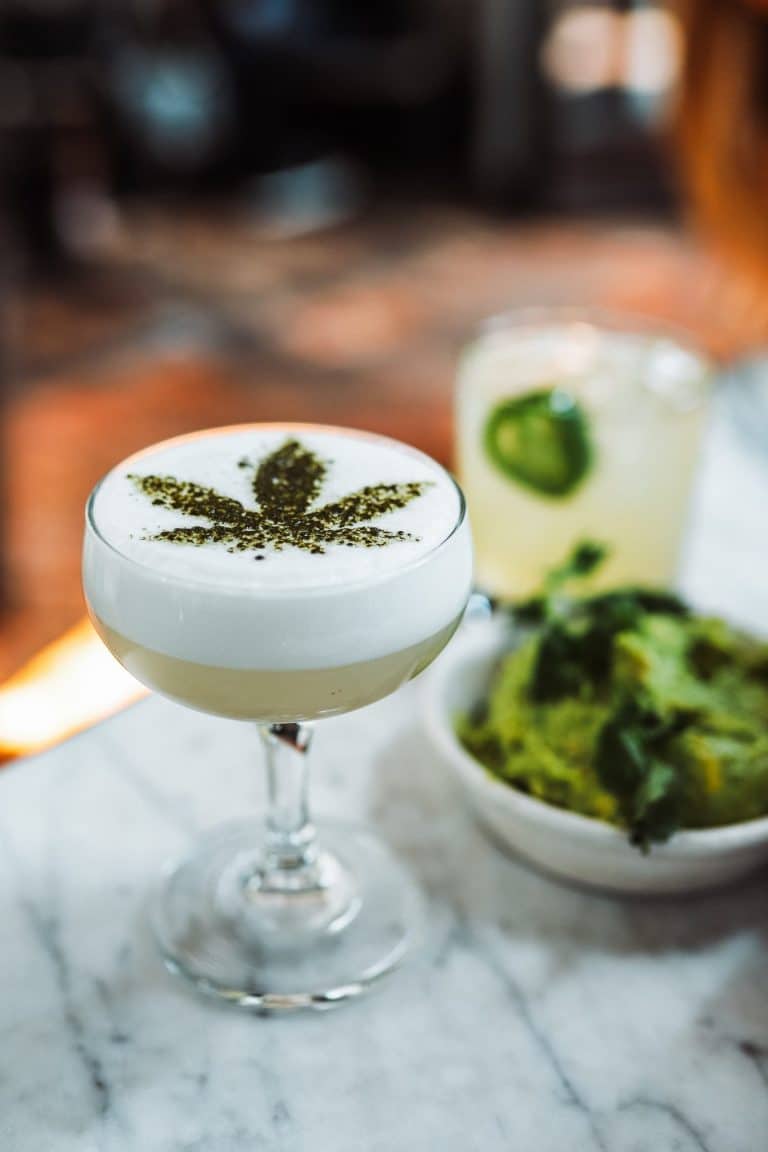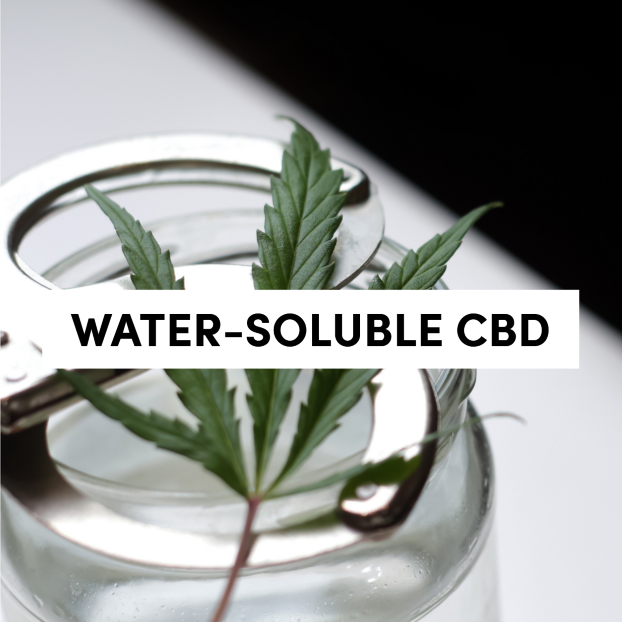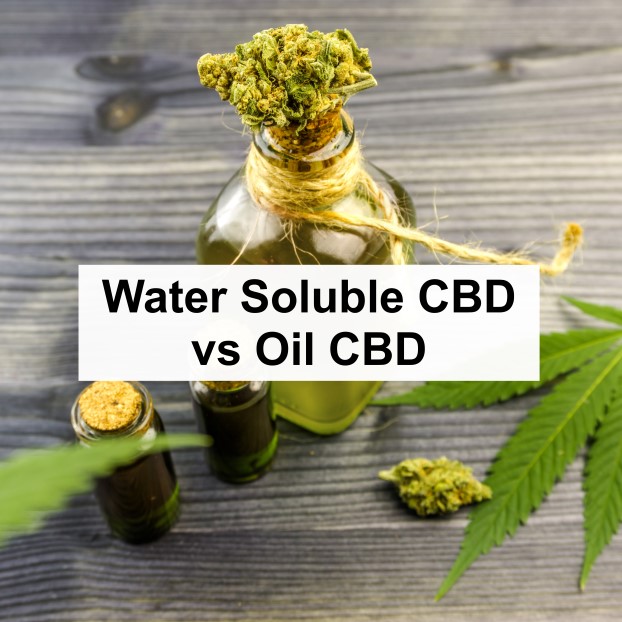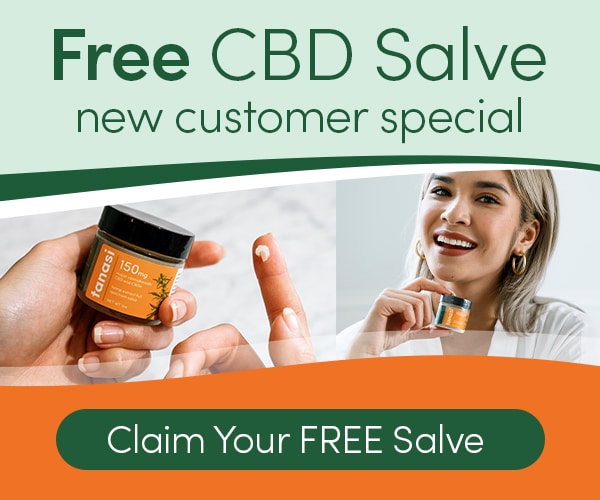Water Soluble CBD Bioavailability, Get The Most Out of CBD
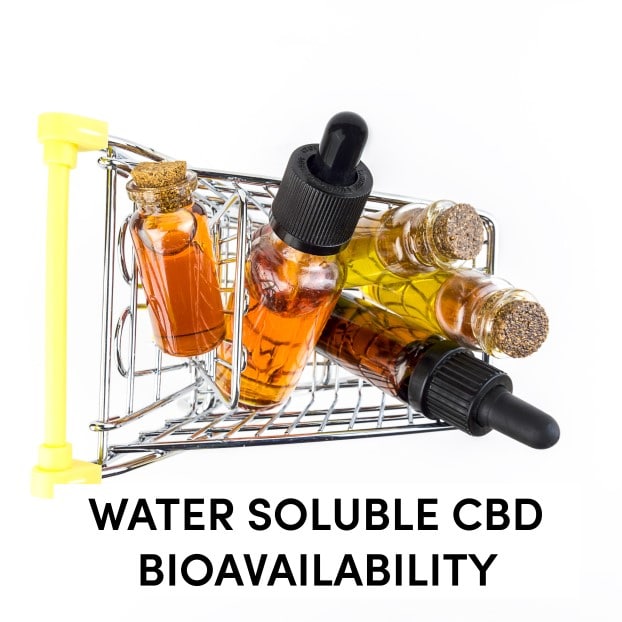
Posted on April 28th, 2021
Cannabidiol (CBD) is a chemical compound that occurs naturally in cannabis plants such as marijuana and hemp. It is one of two main chemical agents in cannabis plants, the other being tetrahydrocannabinol (THC), the substance that creates a “high” effect when consumed. Since the legalization of CBD supplements with extracts from hemp plants containing less than 0.3% THC, the manufacture of CBD-infused products took the cannabis market by storm. People are looking for products that provide the best benefits when living with various symptoms such as:
- Anxiety.
- Sleep disorders.
- Skin problems.
- Pain, and many more.
Inevitably, people are becoming more aware of the bioavailability of the CBD in these products in order to reap the fullest benefits. This raised many questions about the potency of CBD compounds and how easily the body can actually absorb them.
What Is Bioavailability?
Bioavailability refers to the portion of a substance that, when introduced to the body, enters your bloodstream and actually goes to use. For example, intravenously administered medication has a bioavailability rate of 100%, while orally administered substances have the lowest bioavailability. The two main factors that determine the bioavailability of substances are the kind of products used and the manner in which you consume them. As a side note, injectable CBD is something that only professionals should administer.
The most popular way to consume CBD is through oral formulations such as oils, capsules, tinctures, and liquid drops. Orally induced CBD has an average bioavailability of between 6% – 9%. CBD products not formulated for maximum bioavailability will provide only a small portion of the desired CBD compounds available. Thus, it is only that small amount that the body can absorb and use effectively.
Because CBD is a substance not readily absorbed by the body, most will see excretion without exerting any effects. The reason for this is because it is a fat-soluble substance which makes it difficult for the body to absorb. That is in contrast with water-soluble substances, which the body more readily absorbs. Because our bodies are primarily water, if a substance is not water-soluble, the body will have a difficult time absorbing enough of it. This is the reason why the bioavailability of CBD might be low in some presentations. However, the bioavailability of certain CBD products is something manufacturers can maximize by making CBD formulations that are water-soluble. This will increase the body’s ability to properly absorb and process CBD in order to provide the desired benefits.
What is Water Soluble CBD Bioavailability?
In order to understand CBD bioavailability, we first need to understand how CBD the body absorbs and uses CBD.
Bioavailability refers to the amount of an ingested substance that eventually reaches the bloodstream. The body is roughly 65% – 70% water. Thus, it stands to reason that substances that mix well with water will be more bioavailable than those that do not. A little-known fact is that CBD molecules are hydrophobic, which means they are not friendly to water. Given that CBD is a fat-soluble substance, the body will have a tough time processing and absorbing it. Even if directly ingesting CBD, your body still has to process it in order for it to absorb it properly.
How Bioavailable is Water-Soluble CBD?
Water-soluble CBD is formulated by using a complex blend of ingredients that allows the body to absorb the CBD compounds. It ultimately allows the body to absorb CBD up to ten times more efficiently than the ingestion of standard oil-based compounds. These ingredients act as lipoproteins that allow the CBD compounds to move directly into the bloodstream, skipping metabolization. Due to the poor bioavailability of CBD, most of it does not make it into the bloodstream to give out the effects.
In order to absorb CBD, the body uses a molecule like a protective bubble to encapsulate the CBD. This molecule has two sides – a fat-loving (lipophilic) side and a water-loving (hydrophilic) side. The fat-loving side attaches to the CBD molecule, and the water-loving side transports the CBD into the bloodstream. Unfortunately, almost 90% of the CBD substance goes to waste during this process. Manufacturers make water-soluble CBD so that they can bypass this problem.
How Does the Body Absorb Water-Soluble CBD?
There are several methods to increase the bioavailability of CBD, the two most common being Nano and Liposomal. The Nano method works by producing nano-sized particles of CBD that mix more readily with water. The theory is that the smaller the size, the easier it will be for the body to absorb them. The assumption is that the bioavailability of the substance also increases. However, even the smallest particles of CBD will still need encapsulation by a molecule in order to move up to the bloodstream. It’s the same process in every body regardless of the size, so in the end, most of the CBD will inevitably go to waste.
The Liposomal method uses an emulsifier like lecithin to bind CBD to a water molecule instead of the body having to do it. This is a complicated process that requires the addition of several ingredients to maintain its stability. Many of the beneficial compounds of the hemp plant would normally go to waste during this process.
Are Other CBD Products More or Less Bioavailable than Water-Soluble CBD?
Let’s take a look at several different presentations of CBD and their levels of bioavailability:
Oral CBD Products
Of all the delivery forms, oral CBD products have the lowest bioavailability. A large percentage of CBD sees destruction by enzymes and digestive acids before it even has a chance to reach the bloodstream. The small amount that does make it through the intestinal wall undergoes metabolization by the liver before finally reaching the bloodstream. However, the low absorption may see offsetting by the advantages of longer duration times in the body. An animal study found that CBD molecules orally consumed stayed in the body for an average ‘mean residence time’ of 4.2 hours, compared to injected CBD of 3.3 hours in the same study.
Inhaled CBD Products
Inhaled methods of ingesting CBD like vaping, smoking, and nebulizing are more efficient as it bypasses the liver and digestive tract. The inhaled CBD is more readily available through thin membranes that line the alveoli (air sacs) of the lungs. Thus, inhaling makes it easier to absorb it directly into the bloodstream.
Sublingual CBD Products
Sublingual products like drops, mouth and nose sprays deliver CBD directly to the mucous membranes of the mouth and nose. The CBD compounds see absorption through the mucous membranes and transportation directly into the bloodstream. Thus, it effectively bypasses the liver and digestive process, where most of the CBD usually goes to waste. Absorption levels rise by holding sublingual drops under the tongue for at least 20 – 30 seconds.
In the same way, oral sprays absorb via the mucous membranes of the nose and mouth. It’s also advisable to hold it in the mouth for 30 seconds to make sure most of it gets through.
CBD compounds absorb quite rapidly through the mucous membranes of the nasal passages, reaching a maximum concentration in less than ten minutes.
Transdermal CBD Products
Topically applied CBD and transdermal patches deliver CBD into the bloodstream at relatively slow rates compared to other methods. It is useful against inflammatory conditions where it is important to maintain consistent levels of CBD with minimum fluctuation. Unfortunately, because CBD is highly fat-soluble, it can be repelling by the water layer of the skin that creates a barrier for absorption. The solution is to use water-soluble CBD products to increase absorption.
Intravenous CBD Products (For Hospital Use Only)
Intravenous CBD injected directly into the bloodstream is the only method that provides 100% bioavailability. However, Intravenous injections may not be the most effective way as blood levels of CBD drop off rapidly after administration. For example, a study of marijuana smokers found that 20mg of injected CBD had four times the bioavailability compared to a 19mg dose of smoked CBD. Yet, within the first hour, the injected CBD levels reduced by about 93%. This showed that intravenous CBD had a half-life of 24 hours in the study, while smoked CBD had a half-life of 31 hours.
Water Soluble CBD Bioavailability Today
CBD products come in a wide array of forms, each with its own benefits. Manufacturers are constantly seeking new and innovative ways to increase the bioavailability of CBD. Their goal is that consumers can derive maximum benefits from the compounds of the humble cannabis plant. When consumed in oral form, CBD first passes through the digestive system by going through your stomach and into your liver. It is in the lever where it metabolizes before releasing into your bloodstream. As people become more knowledgeable about how CBD work in the body, there is a huge interest in “Water Soluble CBD Bioavailability.” Its ability to deliver CBD more readily and in a more effective way to the body. CBD absorption can significantly increase by taking CBD between meals as food can slow down the rate at which the body removes it from the blood by up to 9 times.

